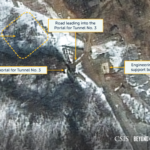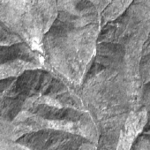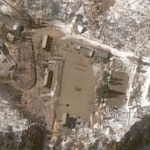September 23, 2024—
In this episode, Andrew Schwartz and Victor Cha discuss Dr. Victor Cha's new book, The Black Box: Demystifying the Study of Korean Unification and North Korea... In this episode, Andrew Schwartz and Victor Cha discuss Dr. Victor Cha's new book, The Black…
July 29, 2024, by Joseph S. Bermudez Jr., Victor Cha and Jennifer Jun—
Despite the goal of advancing denuclearization of the Korean peninsula through leader-to-leader exchanges in 2018 and 2019, thermal infrared (TIR) imagery of the Yongbyon Nuclear Research Center around the summit dates reveals limited impact on Yongbyon’s overall operational status.
June 27, 2024, by Joseph S. Bermudez Jr., Victor Cha and Jennifer Jun—
Part 3 of this series builds upon the methodology and findings presented in Part 1, offering a deeper dive into the operational nuances of the Radiochemistry Lab and the centrifuge plant... Thermal infrared (TIR) analysis via LANDSAT 8 and 9 imagery over two years provides key…
June 26, 2024, by Joseph S. Bermudez Jr., Victor Cha and Jennifer Jun—
Part 2 of this series builds upon the methodology and findings presented in Part 1, offering a deeper dive into the operational nuances of the 5MWe Reactor and the Experimental Light Water Reactor... Closeup of normalized land surface temperature calculated from daytime LANDSAT 8 TIR image taken July…
June 17, 2024, by Joseph S. Bermudez Jr., Victor Cha and Jennifer Jun—
TIR (TIR) analysis via LANDSAT 8 and 9 imagery over two years provides key insights into Yongbyon nuclear facilities' operations, highlighting the intricate strengths and limitations of thermal imagery for operational assessment... Overview of the normalized land surface temperature calculated from daytime LANDSAT 8 thermal infrared (TIR)…
May 2, 2024—
This bonus episode is from Breaking Bad: South Korea's Nuclear Option Report Rollout Event on April 29, 2024. Dr. Victor Cha, Senior Vice President for Asia and Korea Chair, conducted the first U.S. multi-question polling of strategic elites in South Korea on the nuclear question. The new findings of this study “Breaking Bad: South Korea's Nuclear Option” have significant policy implications and the author provides several recommendations for the United States.
April 10, 2024, by Joseph S. Bermudez Jr., Victor Cha and Jennifer Jun—
Recent satellite image of the Punggye-ri Nuclear Test Facility indicates that North Korea continues to be committed to maintaining the general health of the facility... This April 2, 2024, image of the area around the new portal to Tunnel No.…
January 31, 2024—
In this episode, Dr. Ellen Kim is joined by Dr. Victor Cha to discuss the Korea Chair's latest publication, Slow Boil: What to Expect from the DPRK in 2024, the likelihood of increased North Korean belligerence in 2024 and how it ties to the upcoming U.S. election.
January 23, 2024, by Joseph S. Bermudez Jr., Victor Cha and Jennifer Jun—
The first open-source analysis of declassified satellite imagery suggests that the construction of North Korea's Punggye-ri Nuclear Testing Facility started as early as 1985 to 1986... The SPOT 1 satellite image from September 23, 1987, shows the Punggye-ri Nuclear Testing Facility…
January 18, 2024, by Joseph S. Bermudez Jr., Victor Cha and Jennifer Jun—
Satellite image of the Punggye-ri Nuclear Test Facility acquired on January 16, 2024, shows activity which indicates continued commitment for maintenance of the construction achieved in 2023... The Main Administrative and Support Area as seen on January 16, 2024. The courtyard has…










